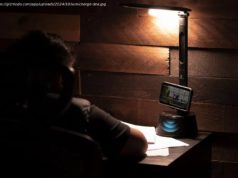The new Roomba s9+ robot vacuum and Braava jet m6 robot mop from iRobot can work in sequence and give your home the ultimate clean. But since both are sold separately, the complete set will set you back close to $1,500.
(iRobot Braava jet m6 and Roomba s9+)
The new Roomba s9+ robot vacuum from iRobot comes equipped with a new design, increased suction, and automatic dirt disposal. It launches alongside the Braava jet m6 robot mop, complete with a laser navigation sensor and the ability to cover more surface area than its predecessors.
Both robots can be linked together via the iRobot app to automatically work in sequence and give your home the ultimate clean. But since both are sold separately, the complete set will set you back close to $1,500.
SEE ALSO: The Best VPN Deals for May 2019
Starting at $999, the Roomba s9+ robot vacuum is equipped with all the features you’d typically find on a high-end robot vacuum, including a navigation sensor, mapping, and a connected app. But as the successor to the Roomba i7+, the new model comes with a few major upgrades and design tweaks.
(iRobot Roomba s9+)
For starters, iRobot has gone with a D-shape for the s9+ rather than the circular build found on most robot vacuums. The front bumper is straight, allowing it to fit into corners and align itself against walls. There’s also a 3D sensor on top of the bumper that scans what’s immediately ahead while also making sure the robot vacuum gets deep into the corners.
Also on top, next to the lid, is a navigation camera to help it learn the layout of your home. The dual rubber rollers and side brush are up front (underneath the bumper), which should make it easier to grab debris along the edges and feed it into the vacuum.
I saw the s9+ in action at a private demo earlier this month. As soon as the Roomba recognized that its bumper hit a wall, it immediately positioned itself so the side of the vacuum was snug against it.






